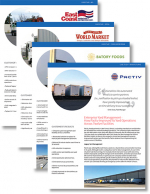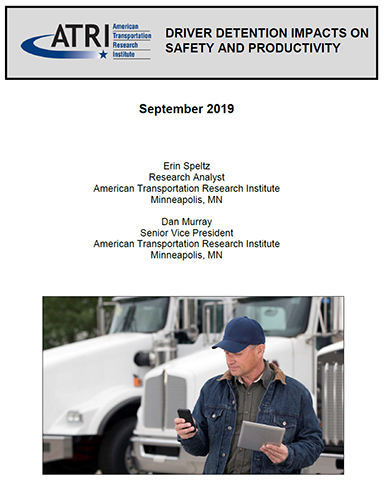ATRI Driver Detention Impacts On Safety & Productivity
The American Transportation Research Institute's survey data collected in 2014 and 2018 shows that detention continues to be a significant issue for the trucking industry.
Driver Detention Impacts On Safety & Productivity
The results from both the motor carrier and driver surveys indicate that customer detention times do significantly influence driver and carrier productivity, and compliance with federal regulations.
Across both driver and carrier responses, refrigerated trailers and bulk/food haulers were detained for the greatest duration.
In addition, the majority of drivers and carriers agreed that the detention time of more than two hours was considered excessive, which mirrors previous research findings.
The majority of drivers reported that they had run out of available Hours-of-Service at a customer facility due to detention and that detention had a significant impact on their ability to comply with the HOS rules.
Yet, despite the ELD mandate that now provides an electronic means for recording wait times, only 17 percent of drivers reported sharing their ELD data with the customer to document and validate how long they had been detained.
In order to mitigate the impact of detention on driver compensation and carrier productivity, fleets will often charge hourly fees for excessive detention.
Carriers and drivers noted that shippers/receivers may not care about HOS constraints on the driver, likely do not understand the HOS regulations and are not held accountable for excessive delays – all of which further aggravates the issue of detention impacts on safety and productivity.
The factors reported as causing the delays were almost identical between the two surveys, meaning the same causes were listed in both surveys at almost the same rate of response.
This implies that shipping and receiving facilities have made little to no improvements to run more efficiently across the four-year time period.
Among the driver and carrier responses, better facility organization, better management of scheduling and appointments, and more flexible work hours were top customer practices that have contributed to increased efficiency and minimized the delay.
Research Contents
- Detention Frequency and Duration
- Detention Impacts and Gender
- Detention and Industry Sector
- Detention and Hours Of Service
- Detention and Driver Compensation
- Detention and Motor Carrier Revenue
- Detention Causes and Potential Solutions
What’s Related




Favorites





